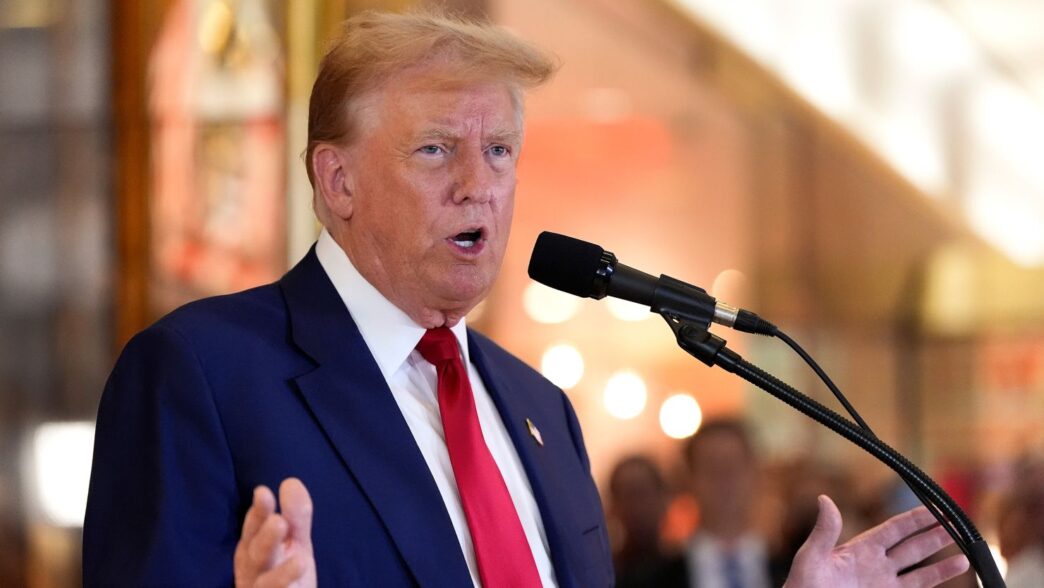Trump BRICS Tariff Threat Sparks Global Trade Tensions
Donald Trump, the President-elect of the United States, has allegedly issued a stern warning to BRICS nations, threatening to impose a 100% tariff if they pursue a rival currency to the U.S. dollar.
The nations, which include Brazil, Russia, India, China, and South Africa, as well as Egypt, Ethiopia, Iran, and the United Arab Emirates, face significant economic repercussions if they attempt to undermine the dollar’s global dominance.
Speaking on Truth Social, Trump stated, “We require a commitment from these countries that they will neither create a new BRICS currency nor back any other currency to replace the mighty U.S. Dollar, or they will face 100% tariffs and should expect to say goodbye to selling into the wonderful U.S. economy.”
This bold stance aligns with Trump’s broader trade agenda, which includes recent threats of a 25% tariff on Canadian and Mexican imports and a 10% levy on Chinese goods.
Why the Trump BRICS Tariff Threat Could Shift Global Trade
The BRICS coalition, originally formed in 2009, was designed to champion the interests of emerging economies and reduce their reliance on the dollar. The dollar’s supremacy in international trade grants the U.S. numerous advantages, such as lower borrowing costs and unparalleled geopolitical influence.
In October, Russian President Vladimir Putin advocated for an alternative international payment system during a BRICS summit, arguing that “the dollar is being used as a weapon.” Similarly, Brazil’s President Luiz Inácio Lula da Silva suggested creating a unified South American currency to limit dependence on the dollar.
Despite these aspirations, experts believe establishing a competing currency remains an uphill battle.
Mark Weinstock, an economist at Pace University, explained, “The idea of BRICS countries creating a reserve currency for the U.S. dollar is not plausible in the short or intermediate term.”
The Economics Behind the Tariff Threat
Trump’s proposed tariffs could result in higher costs for U.S. consumers. Moreover, economists warn that levying a 100% tariff on goods from BRICS nations would raise prices on key imports like Brazilian coffee, Chinese electronics, and South African minerals.
“Like any tariffs, this would mean higher prices for consumers,” Weinstock noted, stressing on the inflationary impact such measures could have on everyday goods.
Beyond economic consequences, critics argue that Trump’s threats could weaken confidence in the dollar.
Furthermore, Brad Setser, a senior fellow at the Council on Foreign Relations, cautioned that coercive tactics might accelerate a global shift away from the dollar.
Challenges Facing a BRICS Currency Initiative
While Trump’s tariff threats grab headlines, the feasibility of a BRICS currency remains limited. Internal political divisions, economic disparities, and a lack of institutional trust among BRICS members hinder progress.
South Africa’s government recently clarified that no formal plans for a BRICS currency exist, noting that current discussions focus solely on trading using national currencies.
“Fundamentally, the desirability of a currency depends on the strength and credibility of its issuer. BRICS nations don’t have the type of institutions that inspire global confidence to challenge the dollar,” Weinstock remarked.
Is Trump BRICS Tariff Threat a Catalyst for Change?
Trump’s bold stance against the BRICS nations and his 100% tariff threat spotlight the growing tensions in global trade dynamics. While the feasibility of a BRICS currency remains questionable, his move amplifies the fragile balance of economic power.
What do you think of the Trump BRICS tariff threat? Could it reshape global trade, or will the dollar maintain its dominance? Share your insights in the comments.
Read More:















